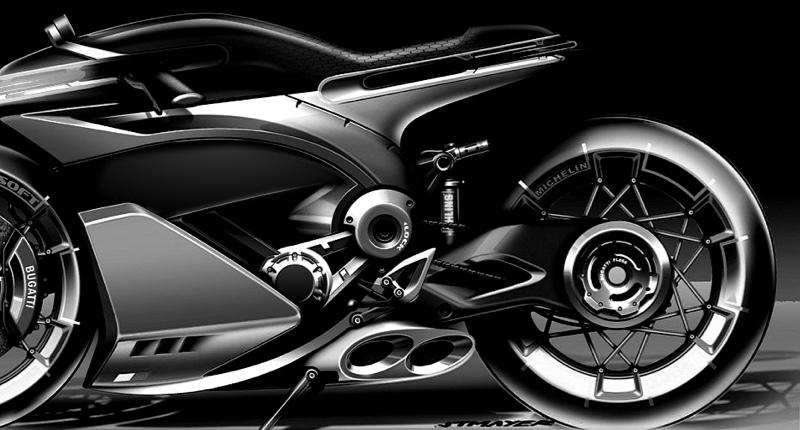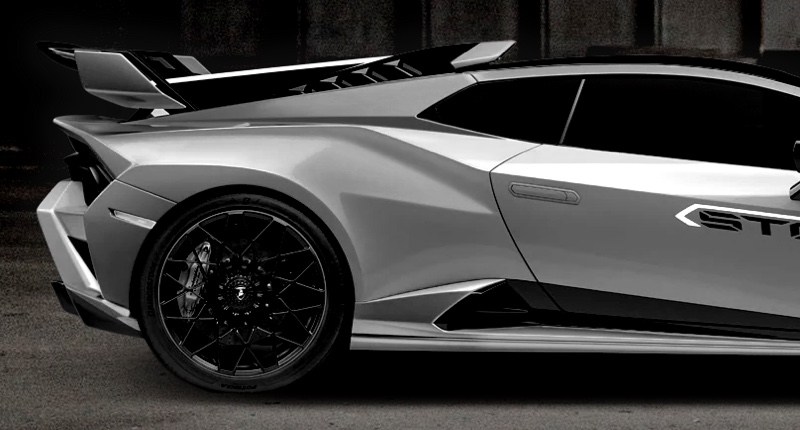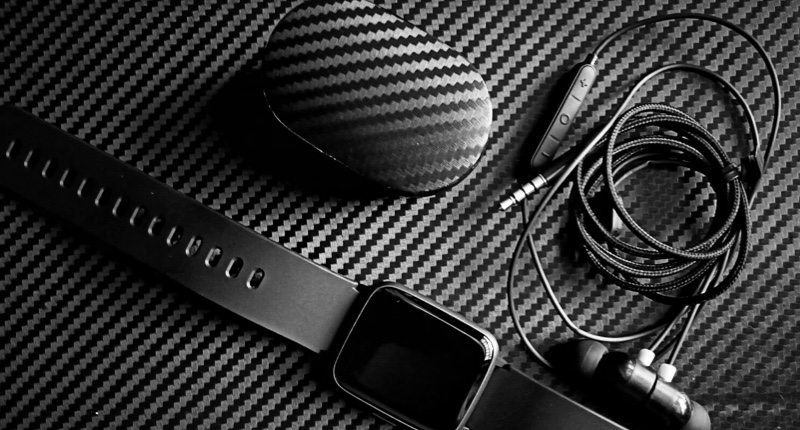Dry Carbon vs Wet Carbon Cost Breakdown for Parts
- Dry Carbon vs Wet Carbon: Cost Breakdown for Parts
- What is dry carbon vs wet carbon? — Understanding the basics
- Manufacturing processes: Prepreg (dry carbon) vs Wet layup (wet carbon)
- Material cost comparison: dry carbon vs wet carbon materials
- Labor, tooling and equipment: where dry carbon vs wet carbon diverge
- Performance and lifecycle cost: deciding value beyond initial price
- Cost examples: small production runs vs mass production
- Example cost breakdown: motorcycle fender (illustrative)
- Key questions to ask your manufacturer when comparing dry carbon vs wet carbon
- Supreem Carbon: How we approach dry carbon vs wet carbon parts
- Why choose Supreem Carbon for dry carbon or wet carbon parts?
- How Supreem Carbon reduces total cost of ownership
- Cost comparison summary table: dry carbon vs wet carbon
- FAQ — Dry carbon vs Wet carbon (Common questions)
- Is dry carbon worth the extra cost?
- How much more does dry carbon cost compared to wet carbon?
- Can wet layup deliver adequate strength for motorcycle or automotive parts?
- What is a hybrid approach?
- How can I get an accurate quote?
- Contact / View Products — Ready to compare dry carbon vs wet carbon for your parts?
- Sources and references
- Notes on data
Dry Carbon vs Wet Carbon: Cost Breakdown for Parts
What is dry carbon vs wet carbon? — Understanding the basics
The phrase dry carbon vs wet carbon refers to two broad approaches to producing carbon fiber composite parts. Dry carbon commonly means prepreg (pre-impregnated) fibers that are supplied with a controlled amount of resin and cured under heat and pressure (often in an autoclave). Wet carbon (or wet layup) means dry fabric is manually wetted with liquid resin during layup and cured at room temperature or in an oven without autoclave pressure. Knowing the difference is the first step to evaluating cost, performance, and suitability for a particular part.
Manufacturing processes: Prepreg (dry carbon) vs Wet layup (wet carbon)
Process differences drive most cost differences between dry carbon vs wet carbon. Key steps are:
- Prepreg (dry carbon): Cut prepreg plies, lay into precision molds, vacuum-bag, cure under autoclave (or hot press). Requires climate-controlled storage (freezers) and strict process controls.
- Wet layup (wet carbon): Cut fabric, hand-wet with resin (e.g., epoxy or polyester), lay into mold, allow cure at ambient or in an oven. Simpler setup, less specialized equipment.
Prepreg produces more consistent fiber-to-resin ratios, lower void content, and generally better mechanical properties; wet layup is more flexible, cheaper to set up, and suitable for low-strength decorative parts or where budget is constrained.
Material cost comparison: dry carbon vs wet carbon materials
Material costs are a major portion of the total. Prepreg materials are more expensive because resin is pre-measured, and manufacturers charge for processing. Wet layup uses dry fabric plus bulk resin.
| Component | Dry carbon (prepreg) | Wet carbon (wet layup) |
|---|---|---|
| Carbon fabric cost (typical basis) | $30–$200/m2 (prepreg pricing varies by fiber type and resin) | $8–$50/m2 (dry fabric only) |
| Resin cost | Included in prepreg; built into price | $3–$15/m2 (dependent on resin system and usage) |
| Storage & handling | Cold-chain storage, higher handling cost | Room-temperature storage, lower cost |
Ranges above are indicative; actual pricing depends on fiber type (standard modulus vs high modulus), weave (plain, twill, uni), and resin system. Sources for typical ranges are listed at the end.
Labor, tooling and equipment: where dry carbon vs wet carbon diverge
Beyond material, tooling, labor and equipment amplify cost differences between dry carbon vs wet carbon:
- Tooling: High-precision molds (e.g., CNC aluminum or high-quality composite tools) are recommended for prepreg/autoclave to achieve tight tolerances. For wet layup, lower-cost tooling (fiberglass molds) may be acceptable for visual parts.
- Equipment: Autoclaves, ovens, and vacuum systems for prepreg increase capital expenditure. Wet layup often uses only vacuum pumps and curing ovens or room cure.
- Labor: Prepreg requires skilled technicians and clean conditions; wet layup is more manual and can be performed with lower-skilled labor but may need more time per part depending on complexity.
- Yield and scrap: Prepreg offers lower scrap when process-controlled; wet layup can have more rework due to inconsistent resin ratios or voids.
Performance and lifecycle cost: deciding value beyond initial price
Higher upfront cost for dry carbon can be justified when lifecycle performance matters. Points to weigh:
- Strength-to-weight: Dry carbon (prepreg/autoclave) generally achieves higher fiber volume fraction and strength, which may allow lighter parts for the same performance.
- Fatigue and durability: Lower voids and consistent curing improve long-term durability; important for structural automotive/motorcycle parts.
- Finish and appearance: Prepreg often yields superior surface finish and clear resin finishes (for visible parts). Wet layup can match that with additional finishing time and coating, but at extra labor cost.
- Maintenance and repair: Wet-laid parts are often easier to repair in-field, which can lower total cost of ownership for some applications.
Cost examples: small production runs vs mass production
How you plan to use a part—single prototype, low-volume, or mass production—changes which method is more cost-effective.
| Scenario | Recommended method | Why (cost drivers) |
|---|---|---|
| Prototype / 1–10 parts | Wet layup (or hybrid) | Lower tooling and material setup costs; faster to iterate |
| Low volume (10–200 parts) | Depends on part function; wet layup often competitive | Tooling amortization still high; choose based on required properties |
| High volume (>500 parts) | Prepreg with production tooling or RTM | Higher initial investment amortizes; consistent quality and lower cycle time |
Note: Resin Transfer Molding (RTM) and other closed-mold processes can compete with prepreg for mid-to-high volume but require their own tooling investment.
Example cost breakdown: motorcycle fender (illustrative)
Below is an illustrative cost estimate for a single customized motorcycle fender produced in low volume. Numbers are indicative and intended to show component breakdown rather than exact quotes.
| Cost item | Prepreg (dry carbon) | Wet layup (wet carbon) |
|---|---|---|
| Materials (fabrics + resin) | $120 | $45 |
| Tooling amortized per part (small batch) | $180 | $60 |
| Labor | $100 | $90 |
| Process costs (autoclave, energy) | $50 | $10 |
| Finishing & QC | $30 | $40 |
| Estimated total per part | $480 | $245 |
For higher volumes, the tooling and process costs per part for prepreg drop, often making dry carbon the better value for performance-critical parts.
Key questions to ask your manufacturer when comparing dry carbon vs wet carbon
When you request quotes for carbon parts, include keywords like customized carbon fiber parts and ask these specifics to properly compare costs:
- What materials (fiber type, weave, resin) are included in the quote?
- What tooling is required and how is tooling cost amortized?
- What inspection and quality controls are applied (void content, ultrasonic testing)?
- What are lead times for prototypes and production runs?
- Are there options for hybrid construction (e.g., wet layup for back side, prepreg face for finish)?
Supreem Carbon: How we approach dry carbon vs wet carbon parts
Supreem Carbon, established in 2017, is a customized manufacturer of carbon fiber parts for automobiles and motorcycles, integrating R&D, design, production, and sales to deliver high-quality products and services. We specialize in the technology research and development of carbon fiber composite products and the production of related items. Our main offerings include the customization and modification of carbon fiber accessories for vehicles, as well as the manufacturing of carbon fiber luggage and sports equipment.
Our factory spans approximately 4,500 square meters and employs 45 skilled production and technical staff, achieving an annual output value of around 4 million dollars. Currently, we offer over 1,000 types of products, including more than 500 customized carbon fiber parts. Our vision is to become the world's leading carbon fiber products manufacturer. Our website is https://www.supreemcarbon.com/.
Why choose Supreem Carbon for dry carbon or wet carbon parts?
Supreem Carbon combines R&D and production capability to help clients select the most cost-effective method—whether that is prepreg (dry carbon) for performance-critical automotive and motorcycle parts or wet layup for prototypes, interior trim, and decorative components. Core competitive advantages include:
- End-to-end capability: in-house design, prototyping, tooling, and production reduce communication delays and unexpected costs.
- Skilled team: 45 experienced production and technical staff who understand process controls for consistent quality.
- Product breadth: more than 1,000 product SKUs and 500+ customized parts means faster turnaround for common parts and proven design references.
- Flexible production approach: hybrid solutions (prepreg faces with wet-layback interiors) to balance cost and performance.
How Supreem Carbon reduces total cost of ownership
To lower lifecycle cost for customers who want to buy dry carbon parts or wet carbon parts, Supreem Carbon uses:
- Process optimization to reduce cycle time and scrap.
- Appropriate tool selection to keep amortized tooling cost per part low.
- Material sourcing strategies to obtain competitive pricing for prepreg and dry fabrics.
- Quality assurance programs to minimize warranty claims and rework.
Cost comparison summary table: dry carbon vs wet carbon
| Factor | Dry carbon (prepreg) | Wet carbon (wet layup) |
|---|---|---|
| Material cost | High | Low |
| Tooling & equipment | High (autoclave, precision molds) | Low–Moderate (simple molds) |
| Labor skill required | High | Moderate |
| Part performance | Superior (higher fiber volume, fewer voids) | Adequate for non-structural or cosmetic parts |
| Best for | Structural, high-performance automotive & motorcycle parts | Prototypes, trims, low-cost custom accessories |
FAQ — Dry carbon vs Wet carbon (Common questions)
Is dry carbon worth the extra cost?
Yes if you need higher structural performance, lower weight, or superior surface finish that justifies the higher upfront investment—especially at mid-to-high production volumes where tooling cost per part drops.
How much more does dry carbon cost compared to wet carbon?
It depends on scope and volume. For single low-volume parts, dry carbon can be 1.5–3x more expensive than wet layup when you account for materials, tooling amortization, and processing. For larger runs, the multiplier decreases. See the example cost tables earlier in this article.
Can wet layup deliver adequate strength for motorcycle or automotive parts?
Wet layup can be suitable for non-structural or semi-structural components (bodywork, trim, fairings). For load-bearing parts (suspension components, structural chassis parts), prepreg/autoclave processes are safer choices due to better fiber volume fraction and lower voids.
What is a hybrid approach?
A hybrid approach uses prepreg for critical surfaces or load paths and wet layup for non-critical regions, combining performance where it matters with cost savings elsewhere. Supreem Carbon offers hybrid solutions tailored to your needs.
How can I get an accurate quote?
Provide part drawings or samples, target volumes, expected performance, finish requirements, and any weight targets. Ask manufacturers to break out material, tooling, labor, and process costs so you can compare proposals directly.
Contact / View Products — Ready to compare dry carbon vs wet carbon for your parts?
If you're evaluating options to buy dry carbon parts or order customized carbon fiber parts, Supreem Carbon can provide guidance and competitive quotes based on your requirements. Visit our product catalog or contact our sales team to request a quote or technical consultation: https://www.supreemcarbon.com/.
Sources and references
- CompositesWorld — technical articles on prepreg vs wet layup and process selection (compositesworld.com)
- Hexcel — materials and prepreg technical information (hexcel.com)
- Gurit — composite manufacturing guides and comparisons (gurit.com)
- ThomasNet — industry guides on composite manufacturing costs and methods (thomasnet.com)
- Industry experience and supplier pricing ranges from composite fabric and prepreg suppliers (market-standard ranges collated 2020–2024)
Notes on data
Price ranges and example numbers are illustrative and derived from industry supplier catalogs, technical papers, and market pricing observed in composite manufacturing between 2020–2024. For exact quotes, contact Supreem Carbon or material suppliers directly.
Custom carbon fiber frame Manufacturers and suppliers
Carbon Fiber vs Aluminum: Weight Comparison for Parts
Expert Carbon Fibre Custom Parts for Your Project Car - Supreem Carbon
Carbon Fiber Car Parts Buying Guide: What to Know
For Carbon Fiber Material
What are the advantages of carbon fiber?
High Strength-to-Weight Ratio
It is stronger than many traditional materials, such as steel and aluminum.This high strength-to-weight ratio allows for the creation of lightweight components that maintain structural integrity and durability.
Lightweight
One of the most significant advantages of carbon fiber is its low density, contributing to lightweight structures. This property is particularly crucial in industries where weight reduction is a priority, such as aerospace, automotive, and sports equipment.
Resistant to corrosion and chemicals
Carbon fiber is inherently resistant to corrosion, making it an ideal material for applications exposed to harsh environments or corrosive substances. This property contributes to the longevity of components and reduces maintenance requirements. Carbon fiber has good chemical resistance, making it suitable for use in environments where exposure to chemicals or harsh solvents is a concern. This resistance enhances the material's durability in various industrial settings.
Tolerant of high temperature
Carbon fiber exhibits excellent thermal stability and resistance to high temperatures. This makes it suitable for applications where components are exposed to elevated temperatures, such as in the aerospace and automotive industries.
Low thermal expansion
Carbon fiber has a low coefficient of thermal expansion, meaning it expands or contracts minimally with changes in temperature. This property contributes to dimensional stability, making carbon fiber components reliable in varying temperature conditions.
Aesthetic Appeal
Carbon fiber has a modern and high-tech appearance, contributing to its aesthetic appeal. This property is leveraged in consumer goods, automotive components, and sporting equipment where visual appeal is important.
For Products
How can I get some sample?
Actually we dont provide the free sample to customer, you can place a sample order if need some parts.
What is main products for factory?
Supreem carbon mainly produce carbon fiber custom products for automobile and motorcycle accessaries, including the design, develop and manufacturing of appearance parts, interior parts, functional parts, etc. Other carbon fiber custom goods also can produce for you.
For After-sales Service
Do you offer a warranty?
Six month standard warranty on all products. Damage due to installation error or natural elements will not be covered.
How can I cancel the order?
We may only cancel your order if it has not been fulfilled yet. We would be more than happy to assist you with any adjustments if you'd wish instead!

Yamaha R1 Carbon Fiber Side Fairings
Introducing the Supreem Carbon Fiber Long Side Panels for Yamaha R1. Crafted with precision and expertise, this front side fairing is designed to elevate the performance and aesthetics of your R1. Made from high-quality carbon fiber, this fairing is not only lightweight but also incredibly durable, providing optimal protection for your motorcycle.

Yamaha R1 Carbon Fiber Airbox Tank Cover
The Supreem Carbon Yamaha R1 Carbon Fiber Airbox Tank Cover provides lightweight, durable protection with a sleek finish. Designed for R1 models, it enhances the style and performance of your bike. Its lightweight structure improves performance while maintaining the premium aesthetics necessary for high-end modification projects. As a dedicated manufacturer of carbon fiber parts, we provide stable production capacity, customization options, and strict quality control to support enterprise-level procurement and OEM/ODM needs.

Carbon Fiber Rear Seat Panel for BMW S1000R & M1000RR – Lightweight Performance
This carbon fiber rear seat panel is engineered for the BMW S1000R and M1000RR, offering superior rigidity, reduced weight, and a premium racing finish. Produced with autoclave technology and strict QC standards, the part ensures consistent OEM-level fitment. Supreem Carbon provides wholesale supply, stable bulk production, and customized solutions for global clients.

High-Performance Carbon Fiber Rear Undertail for BMW S1000R
Engineered for distributors, tuning brands, and motorcycle accessory businesses, the BMW S1000R Carbon Fiber Rear Undertail is a high-quality, durable, lightweight carbon fiber upgrade for the S1000R platform. This component is manufactured using aerospace-grade carbon fiber and precision molds to deliver superior stiffness, a seamless OEM-level fit, and a premium visual finish suitable for high-end aftermarket applications.
© 2024 Supreem Carbon All Rights Reserved.





Facebook
Pinterest
LinkedIn
Instagram